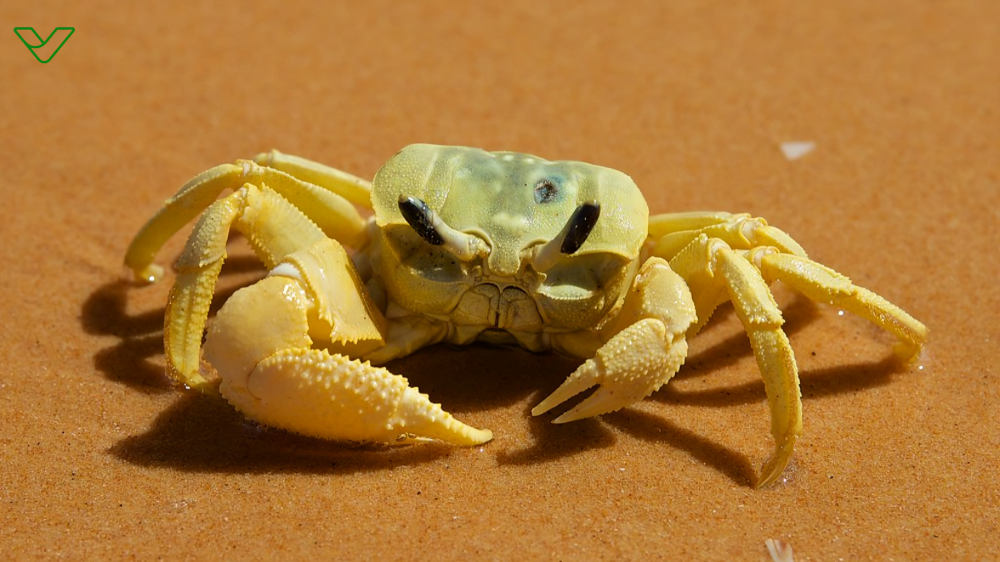Coastal adventures bring a wealth of experiences, from sunbathing on sandy beaches to exploring vibrant ecosystems teeming with life. Among the many wonders you may encounter along the shoreline, one captivating creature stands out—the Turali Land Crab. Known for its distinct appearance and fascinating behaviors, this remarkable crab is more than just a colorful addition to the coastal landscape; it plays an essential role in its habitat. In this article, we will delve into the unique features of the Turali Land Crab, its ecological significance, and how it can enhance your coastal adventures.
What is the Turali Land Crab?
The Turali Land Crab (scientific name: Cardisoma guanhumi) is a fascinating crustacean native to coastal regions, particularly found in mangroves, salt marshes, and sandy beaches. This crab is known for its striking coloration, which can range from vibrant blues to greens, often adorned with splashes of red and orange. Its size can vary, with adults typically measuring between 4 and 6 inches in width, making them noticeable and engaging to observe.
The Turali Land Crab is part of the family Gecarcinidae, which includes other land crabs. Unlike many other crab species that live primarily in water, the Turali Land Crab has adapted to a semi-terrestrial lifestyle. This means it spends a significant amount of time on land, where it forages for food, interacts with other species, and participates in the complex web of coastal ecosystems.
Habitat and Distribution
The Turali Land Crab is predominantly found in the coastal regions of tropical and subtropical areas. Its habitat includes mangrove forests, which serve as crucial breeding grounds and nurseries for various marine species. Mangroves provide shelter and abundant food sources, making them an ideal environment for these crabs.
In addition to mangroves, Turali Land Crabs are commonly seen in sandy areas and along the edges of salt marshes. They thrive in environments where moisture is available, such as near tidal pools and areas that are periodically flooded by saltwater. These habitats not only support their survival but also enhance their unique behaviors, which make them intriguing to observe during your coastal adventures.

Behavior and Ecology
Feeding Habits
The Turali Land Crab is primarily herbivorous, feeding on a diverse diet that includes leaves, fruits, and decaying plant matter. They play a vital role in nutrient cycling within their ecosystem, as they consume organic material and break it down, contributing to soil fertility. Their foraging behavior also helps control vegetation growth, ensuring a balanced habitat.
Despite their herbivorous tendencies, Turali Land Crabs are known to be opportunistic feeders. They may consume small invertebrates or scavenger remains if the opportunity arises, showcasing their adaptability in finding food sources.
Unique Burrowing Behavior
One of the most fascinating aspects of the Turali Land Crab is its burrowing behavior. These crabs create intricate burrows in the soft substrate, which serve multiple purposes. The burrows provide a refuge from predators, regulate moisture levels, and create a microhabitat that supports various microorganisms. Additionally, burrowing allows the Turali Land Crab to escape extreme temperatures and remain safe during high tide.
The burrows can vary in size and complexity, with some reaching impressive depths. These underground tunnels are often interconnected, creating a network of homes for multiple crabs. Observing these burrows can provide insight into the social dynamics of Turali Land Crabs and their interactions with other species within the ecosystem.
Mating and Reproduction
Mating season for Turali Land Crabs typically occurs during the warmer months when environmental conditions are favorable. Male crabs engage in elaborate courtship displays, showcasing their vibrant colors and performing aggressive postures to attract females. This display not only highlights the males’ fitness but also establishes dominance among competing suitors.
After successful mating, female Turali Land Crabs carry fertilized eggs in a protective pouch beneath their abdomen until they are ready to hatch. This brood care is crucial for the survival of the young crabs, as they are vulnerable to predators in their early stages of life. When the eggs hatch, the tiny larvae are released into the water, where they will go through several developmental stages before returning to land as juvenile crabs.
The Turali Land Crab and Coastal Ecosystems
Ecological Importance
The Turali Land Crab plays a significant role in maintaining the health and stability of coastal ecosystems. As a herbivore, it contributes to the decomposition of organic matter and nutrient cycling, supporting the growth of plants and other organisms. Additionally, its burrowing activities help aerate the soil, promoting healthy root systems and enhancing plant growth.
In mangrove ecosystems, Turali Land Crabs serve as prey for various predators, including birds, fish, and larger crustaceans. Their presence in the food web is essential for maintaining ecological balance and supporting biodiversity.
Indicator Species
Turali Land Crabs are considered indicator species, meaning their presence and health reflect the overall condition of their habitat. A thriving population of Turali Land Crabs indicates a healthy ecosystem, while a decline in their numbers may signal environmental issues, such as habitat degradation or pollution. By monitoring these crabs, researchers and conservationists can gain valuable insights into the health of coastal habitats and take necessary action to protect them.

How to Spot and Observe Turali Land Crabs
Best Times for Observation
If you’re planning a coastal adventure and want to spot Turali Land Crabs, the best time for observation is during low tide. As the tide recedes, these crabs emerge from their burrows to forage for food, making them more visible. Early mornings and late afternoons are also ideal times, as the temperatures are cooler, encouraging the crabs to be more active.
Where to Look
Turali Land Crabs can often be found near the edges of mangroves, sandy beaches, and salt marshes. Look for their characteristic burrows, which are often identifiable by their circular openings and the presence of excavated soil nearby. If you’re near a mangrove area, keep an eye out for the colorful crabs as they navigate through the vegetation.
Respectful Observation
When observing Turali Land Crabs, it’s essential to do so respectfully. Avoid disturbing their burrows or handling the crabs unless necessary, as this can stress them and disrupt their natural behavior. Instead, focus on watching from a distance, using binoculars or a camera with a zoom lens to capture their beauty without intruding on their habitat.
Turali Land Crab in Culinary Traditions
In some coastal cultures, Turali Land Crabs are also a source of culinary delight. Their sweet and tender meat is highly sought after in various traditional dishes. In regions where these crabs are abundant, local communities have developed recipes that highlight their unique flavors.
Cooking Methods
Turali Land Crabs can be prepared in numerous ways, including steaming, boiling, or grilling. They can be used in soups, salads, or as a delicious seafood centerpiece for family gatherings. The meat is often seasoned with local spices and herbs, enhancing its natural sweetness.
Sustainable Harvesting
If you’re considering harvesting Turali Land Crabs for culinary purposes, it’s crucial to do so sustainably. Follow local regulations regarding crab harvesting to ensure that populations remain healthy and that the ecosystem is not negatively impacted. Responsible harvesting practices contribute to the long-term sustainability of crab populations and their habitats.
Conservation and Protection of the Turali Land Crab
Threats to Habitat
Despite their resilience, Turali Land Crabs face several threats due to human activity. Coastal development, pollution, and habitat destruction significantly impact their populations. Mangrove forests, crucial for their survival, are often cleared for urban expansion, leading to a decline in available habitats. Additionally, water pollution can harm both the crabs and their food sources, disrupting their ecological balance.
Conservation Efforts
Conservation efforts are essential to protect the Turali Land Crab and its habitat. Organizations dedicated to marine and coastal conservation work to raise awareness about the importance of mangrove ecosystems and advocate for their protection. Initiatives such as habitat restoration, pollution control, and sustainable harvesting practices aim to ensure the long-term survival of the Turali Land Crab and other species reliant on these ecosystems.
Engaging in community awareness programs can also play a significant role in conservation. By educating local communities about the ecological importance of the Turali Land Crab and the need for sustainable practices, individuals can contribute to the protection of these fascinating creatures and their habitats.
Responsible Tourism
For those embarking on coastal adventures, responsible tourism practices can help protect the Turali Land Crab and its environment. Opt for eco-friendly tours that prioritize conservation and sustainability, and avoid activities that may harm local wildlife or their habitats. Respecting the natural surroundings and adhering to local regulations can contribute to the preservation of these unique ecosystems.

Fun Facts About the Turali Land Crab
- Colorful Camouflage: The vibrant colors of the Turali Land Crab not only make them visually stunning but also serve as a form of camouflage among the colorful vegetation of their habitat.
- Long-Lived Species: Turali Land Crabs have a relatively long lifespan, often living up to several years in the wild, provided they are not threatened by predators or environmental changes.
- Strong Defenders: When threatened, these crabs are known to use their pincers for defense. They can deliver a surprisingly strong pinch, making them formidable for their size.
- Social Creatures: While they are primarily solitary when foraging, Turali Land Crabs may gather in groups near their burrows, particularly during the mating season.
- Night Owls: Although they can be active during the day, Turali Land Crabs are often more active at night, when cooler temperatures make foraging more comfortable.
More: Reddit
Conclusion
The Turali Land Crab is undoubtedly a unique and fascinating addition to any coastal adventure. From its vibrant colors and intriguing behaviors to its essential role in the ecosystem, this crab captivates the hearts of those who encounter it. By understanding and appreciating the Turali Land Crab, you not only enrich your coastal experiences but also contribute to the preservation of the delicate balance within coastal ecosystems.
Whether you’re a nature enthusiast, a budding marine biologist, or simply someone who enjoys exploring the outdoors, keep an eye out for the Turali Land Crab during your next coastal adventure. Embrace the wonder of nature, respect its inhabitants, and cherish the memories you create while observing these remarkable creatures in their natural habitat. The Turali Land Crab is not just a crab; it’s a symbol of the beauty and diversity that coastal environments offer, reminding us of the importance of conservation and appreciation for the world around us.







